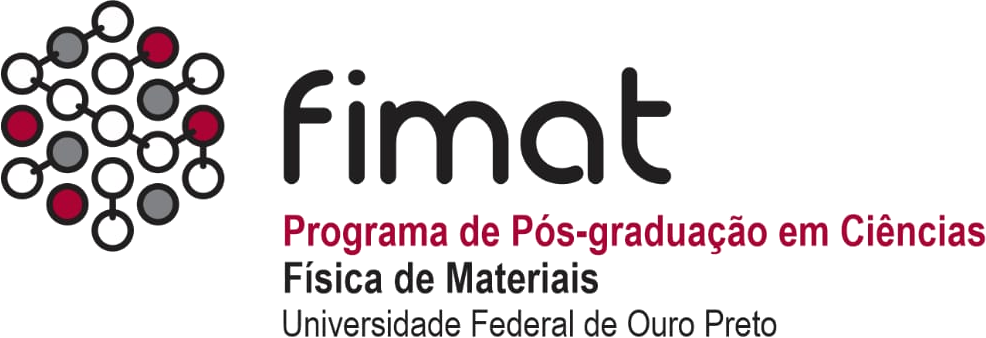Jakler Nichele, Alan B. de Oliveira, Leonardo S. B. de Alves, and Itamar Borges. 2017. “
Accurate calculation of near-critical heat capacities CP and CV of argon using molecular dynamics.” Journal of Molecular Liquids, 237, Supplement C, Pp. 65 - 70.
Publisher's Version Carlos E. T. Magalhães, Marcio M. da Silva, Ranylson M. L. Savedra, and Melissa F. Siqueira. 2017. “
Anisotropic electron mobility in fluorene-PPV and fluorene-MEH-PPV.” Molecular Physics, 115, 3, Pp. 357-363.
Publisher's Version Ronaldo J. C. Batista, Evy A. Salcedo Torres, Alan Barros de Oliveira, and Marcia C. B. Barbosa. 2017. “
A coarse-grained model based on core-oftened potentials for anomalous polymers.” Journal of Chemical Sciences, 129, 7, Pp. 999–1003.
Publisher's VersionAbstractStarting from an anomalous monomeric system, where particles interact via a two-scale core-softened potential, we investigate how the system properties evolve inasmuch as particles are put together to form polymers whose chain size varies from 4 up to 32 monomers. We observed that the density and diffusion anomaly regions in the pressure versus temperature phase diagram of the monomeric system is smaller in the monomeric system when compared with the polymers. We also found that the polymers do not fold into themselves to form solid spheres instead they tend to maximize the chain-fluid contact. Also, Rouse and Reptation models can be employed to describe the polymers diffusive behaviour. But, in contrast to results of simulations where mere interacts via Lennard-Jones potentials, our results shown a much shorter entanglement length of at most 8 monomers.
G.R. Ferreira, A.M. Tannure, L.C. Cardoso, M.F. Siqueira, A.G.C. Bianchi, and R.F. Bianchi. 2017. “
Colorimetric dosimeter to promote most efficient use of neonatal phototherapy.” Sensors and Actuators B: Chemical, 240, Supplement C, Pp. 1003 - 1008.
Publisher's Version Juliana A. Gon\c calves, Regiane Nascimento, Matheus J. S. Matos, Alan B. de Oliveira, Hélio Chacham, and Ronaldo J. C. Batista. 2017. “
Edge-Reconstructed, Few-Layered Graphene Nanoribbons: Stability and Electronic Properties.” The Journal of Physical Chemistry C, 121, 10, Pp. 5836-5840.
Publisher's Version Luiz Gustavo Pimenta Martins, Matheus J. S. Matos, Alexandre R. Paschoal, Paulo T. C. Freire, Nadia F. Andrade, Acr??sio L. Aguiar, Jing Kong, Bernardo R. A. Neves, Alan B. de Oliveira, M??rio S. C. Mazzoni, Antonio G. Souza Filho, and Luiz Gustavo Can?§ado. 2017. “
Raman evidence for pressure-induced formation of diamondene.” Nature Communications, 8, 1, Pp. 96.
Publisher's VersionAbstractDespite the advanced stage of diamond thin-film technology, with applications ranging from superconductivity to biosensing, the realization of a stable and atomically thick two-dimensional diamond material, named here as diamondene, is still forthcoming. Adding to the outstanding properties of its bulk and thin-film counterparts, diamondene is predicted to be a ferromagnetic semiconductor with spin polarized bands. Here, we provide spectroscopic evidence for the formation of diamondene by performing Raman spectroscopy of double-layer graphene under high pressure. The results are explained in terms of a breakdown in the Kohn anomaly associated with the finite size of the remaining graphene sites surrounded by the diamondene matrix. Ab initio calculations and molecular dynamics simulations are employed to clarify the mechanism of diamondene formation, which requires two or more layers of graphene subjected to high pressures in the presence of specific chemical groups such as hydroxyl groups or hydrogens.
Carlos E. T. de Magalhães, Ranylson M. L. Savedra, Karina S. Dias, Rodrigo Ramos, and Melissa F. Siqueira. 2017. “
Structural dependence of MEH-PPV chromism in solution.” Journal of Molecular Modeling, 23, 3, Pp. 91.
Publisher's VersionAbstractThe chromism observed in the MEH-PPV polymer in tetrahydrofuran (THF) solution is discussed as a function of the structural morphology of the backbone chains. To evaluate this phenomenon, we carried out simulations employing a hybrid methodology using molecular dynamics and quantum mechanical approaches. Our results support the hypothesis that the morphological order–disorder transition is related to the change from red to blue phase observed experimentally. The morphological disorder is associated with total or partial twisted arrangements in the polymer backbone, which induces an electronic conjugation length more confined to shorter segments. In addition, the main band of the MEH-PPV UV–Vis spectrum at the lower wavelength is related to the blue phase, in contrast to the red phase found for the more planar backbone chains.
Edinardo I. B. Rodrigues, Mauro M. Doria, Alfredo A. Vargas-Paredes, Marco Cariglia, and Andrea Perali. 2017. “
Zero Helicity States in the LaAlO3-SrTiO3 Interface: The Origin of the Mass Anisotropy.” Journal of Superconductivity and Novel Magnetism, 30, 1, Pp. 145–150.
Publisher's VersionAbstractWe consider the transverse magnetic moment and torque observed by Li et al. (Nat. Phys. 7, 762 (2011)) in the LaAlO3/SrTiO3 interface and the theoretical model for it based on the zero helicity states. The transverse magnetic moment is explained in terms of an asymmetry between the two sides of the interface. We show here that there is an intrinsic magnetization which gives rise to a mass anisotropy in each side of the interface.
